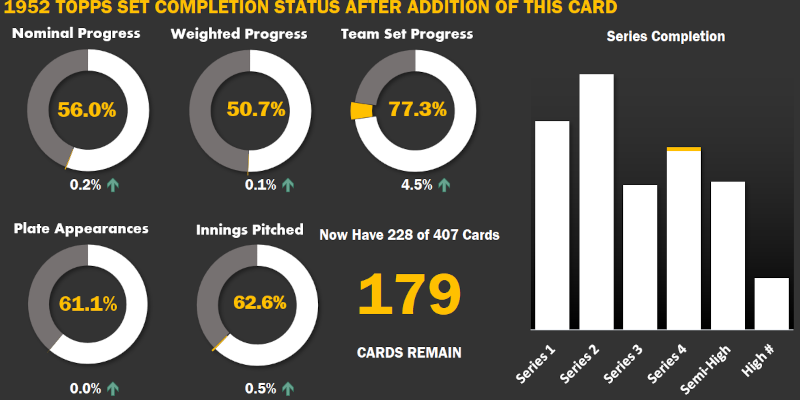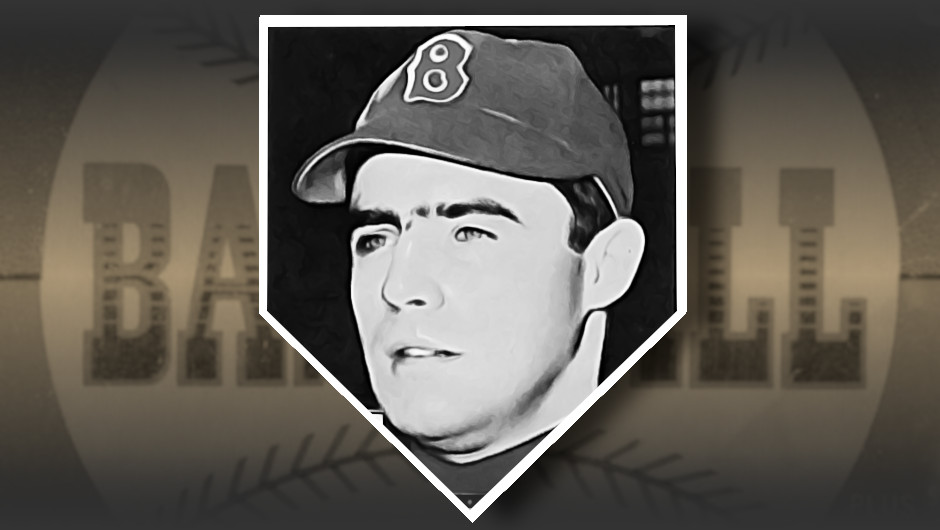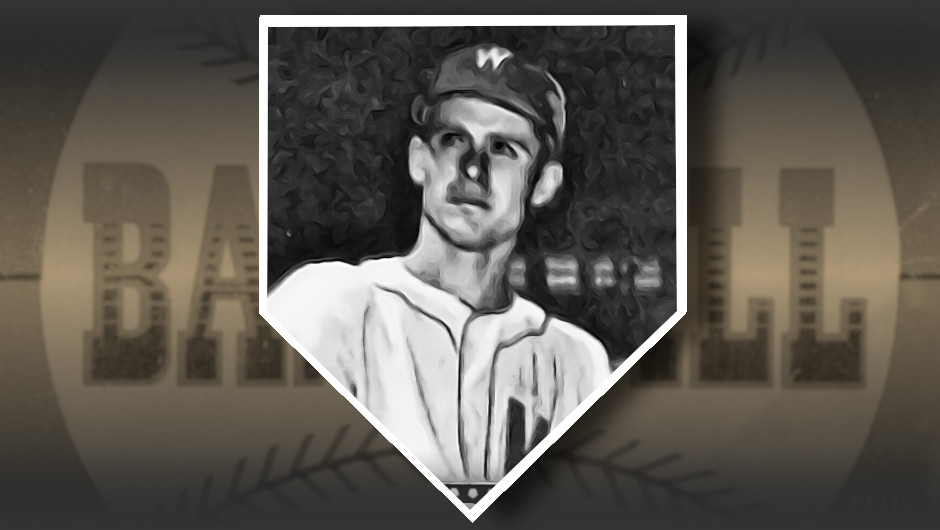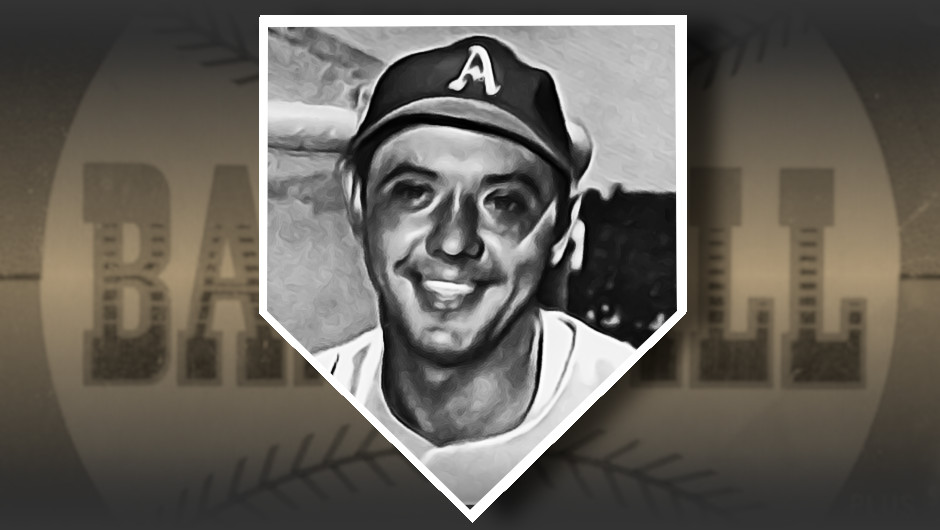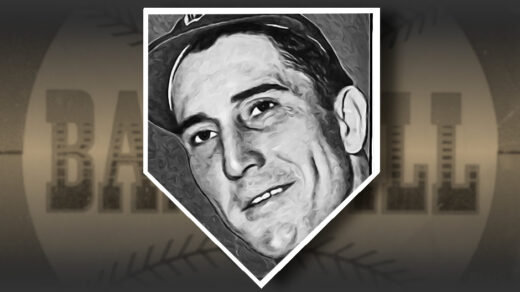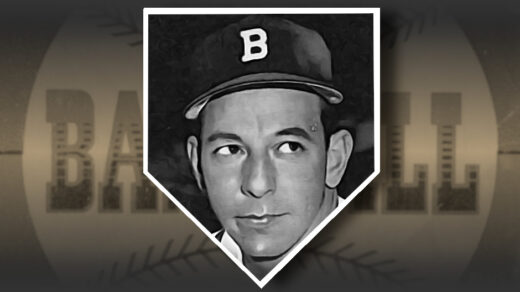Sam Zoldak was a big league pitcher whose abilities seemed to be just a hair above average. There’s not a lot to write about when a player shows up and competently goes about his job. There are, however, two small items from his story that make me take notice.
The first is the fact that he simultaneously played college and professional baseball. He first took the mound as a pro with the minor league Palatka Azaleas in 1938 before being released and joining Fordham University’s baseball team. While still on the Fordham roster he augmented his playing time with a role on the pitching staff of the Metropolitan Baseball Association’s Cedarhurst team, making him one of a few players appearing in the ’52 Topps set who existed on both sides of the amateur/pro boundary.
The second Zoldak tale comes from a 1949 game that does not officially exist. His Cleveland Indians were trailing by three games in the standings when they faced off against the first place New York Yankees on July 27. It was an odd contest. Bob Feller gave up three quick runs, launched a fastball into Joe DiMaggio’s back, and walked Yogi Berra without recording an out. Zoldak was brought in for relief as Feller was chased from the game. He did his part, allowing one unearned run through four innings and offset the damage by clubbing his first career home run in the third inning.
Already a game filled with the unexpected (Feller falling apart / Zoldak’s homer), a sudden downpour caught out Yankee Stadium’s 47,596 fans on an otherwise fine day. The cloudburst struck without warning as Cleveland prepared to bat in the fifth inning. Groundskeepers struggled to roll tarps across a rapidly deteriorating field and attempts to rearrange protective coverings were unsuccessful. Chief umpire Bill McGowan deemed the field a total loss for further play and officially called the game. Because Zoldak and his Indians had not completed the requisite 4½ innings to make the game official, the contest did not count in the standings and all related stats were struck from the record books. This included Zoldak’s home run, which would have been the only one of his career.
He had a major league homerun to his credit but couldn’t prove it to anyone. It didn’t technically exist.
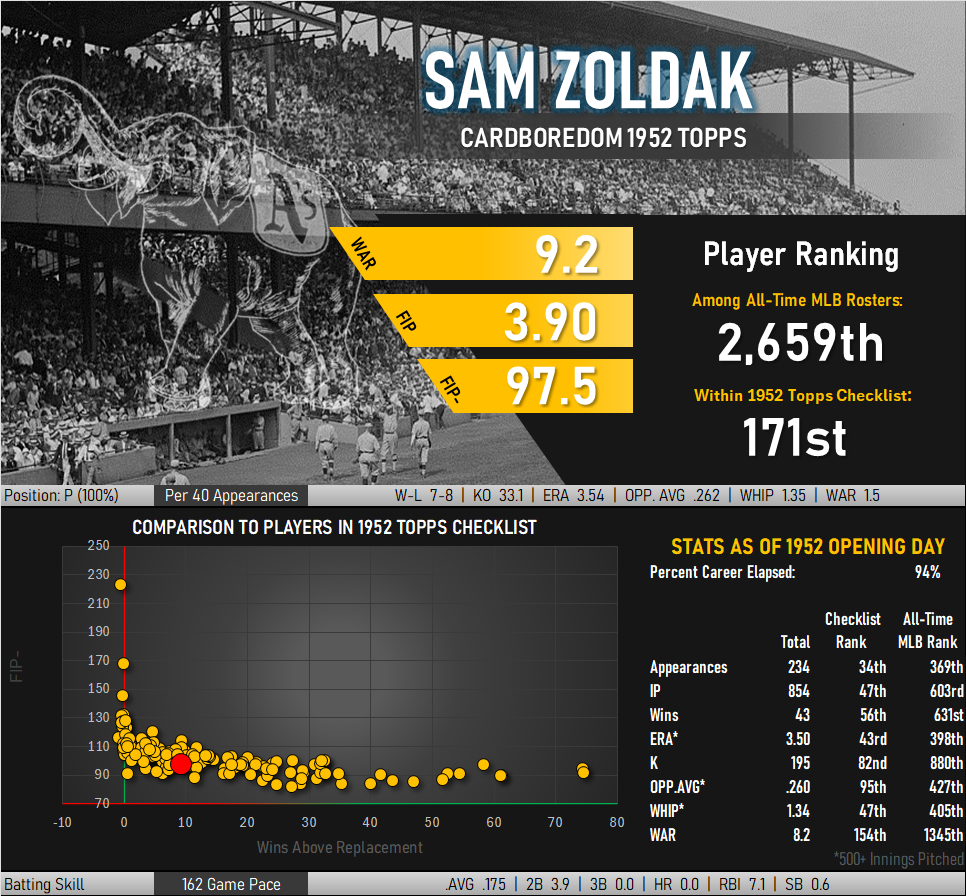
Zoldak didn’t appear on too many baseball cards during his career, primarily limiting his cardboard appearances to 1949-1951 Bowman issues and a handful of team-issued photo packs. His 1951 Bowman card is of interest as it reports him to have been recently traded to the Philadelphia Athletics while picturing him warming up in a Cleveland uniform and accompanied by Dale Mitchell and Mickey Vernon in the background. The text on the reverse says the move to Philadelphia came about “at press time.”
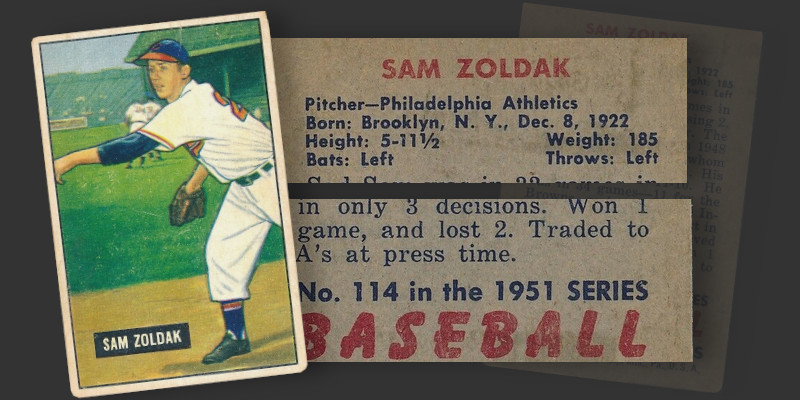
Zoldak was wrapping up his career when he appeared in the checklist of Topps’ fourth series of 1952 baseball cards. My copy looks alright. It has some corner wear and is extremely off-center. There is a very large wrinkle visible on the back but somehow this monster does not break through the surface on the front.
The photograph is of particular interest as there are several differences compared to other cards in the set. For starters, the crowded stands in the background are actually given some color. Many cards with visible seating areas give these backdrops a sepia wash rather that apply individual colors. While I cannot make out the setting of the photo, it is certainly not Philadelphia’s Shibe Park. There exists a series of photos taken in the late 1940s with Zoldak in a Cleveland uniform with a similar handrail just visible behind his head. My guess this is from the same shoot.
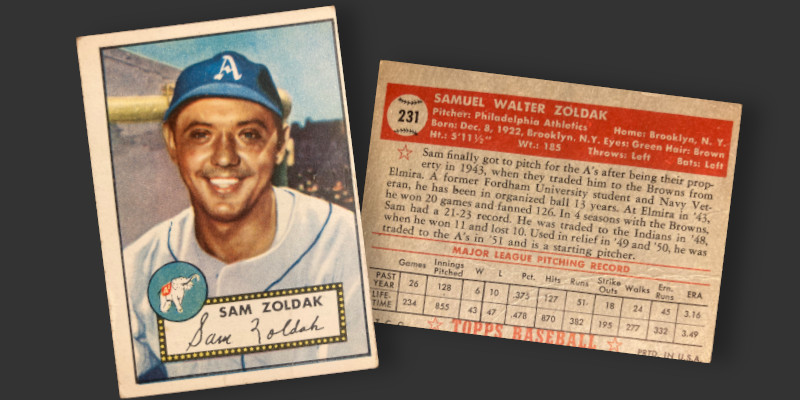
Zoldak’s cap has clearly been painted over to reflect his new position with the Athletics. The emblem carries the serifs familiar to A’s fans, though the coloring artist added an additional flourish to the crossbar that forms the middle part of the letter. Three other Philadelphia players (Dave Philley, Allie Clark, Ray Murray) get the same treatment. While the A’s experimented with multiple looks leading up to their move out of Philadelphia, I have yet to find a photo showing this style logo ever being used.
